Tonight we swam in the cool waters of the Colorado River with Arizona on the near bank and California, our final state, on the opposite shore. It had been another hot afternoon with temperatures in the mid 80s so when we arrived at the River Breeze RV site in Ehrenberg to be told the showers weren’t working we took the office attendant’s advice and cycled down to the river and jumped straight in.
It was one of those moments on a long distance ride that you know you’ll remember for the rest of your life. In fact much of this last week on the Southern Tier is firmly wedging itself into the memory banks to be downloaded in the months and years ahead.
Last night was a prime example – after late night showers and washing our clothes we crawled into our tents to be serenaded by a whole variety of sounds. First an owl, which sounded incredibly close, started hooting. Then its mate, or perhaps its date, started answering from perhaps a mile away.
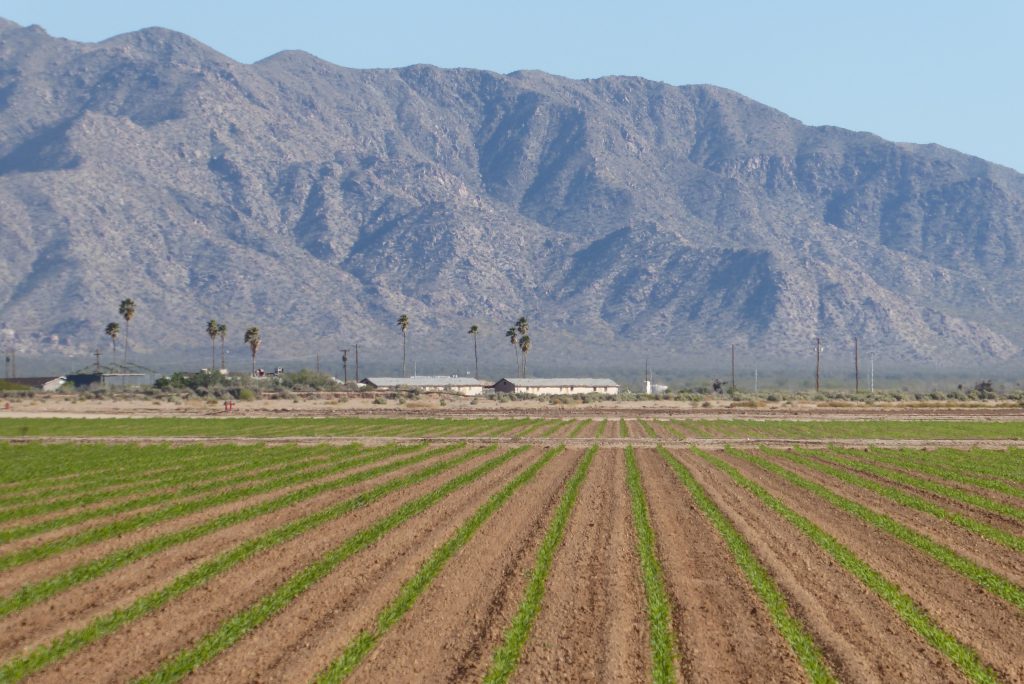
A little later the yip-yipping of coyotes could be heard in the distance, instantly setting off one of the local dogs to bark out a warning that they shouldn’t venture any nearer. Then, I’m pretty certain I heard the cry of a wolf. I may have been wrong of course but there are 22 wild packs of Mexican wolves in New Mexico and Arizona so it’s possible.
“If there’s not a case for re-wilding here it would be hard to win the argument anywhere else in the world”.
I hope it was a wolf. Cycling across these vast landscapes I’m still surprised and saddened at how infrequently you see any large animals. I know there are plenty of voices against the reintroduction of wolves in the US, particularly from those looking after livestock, but America has so much available space – if there’s not a case for re-wilding here it would be hard to win the argument anywhere else in the world.
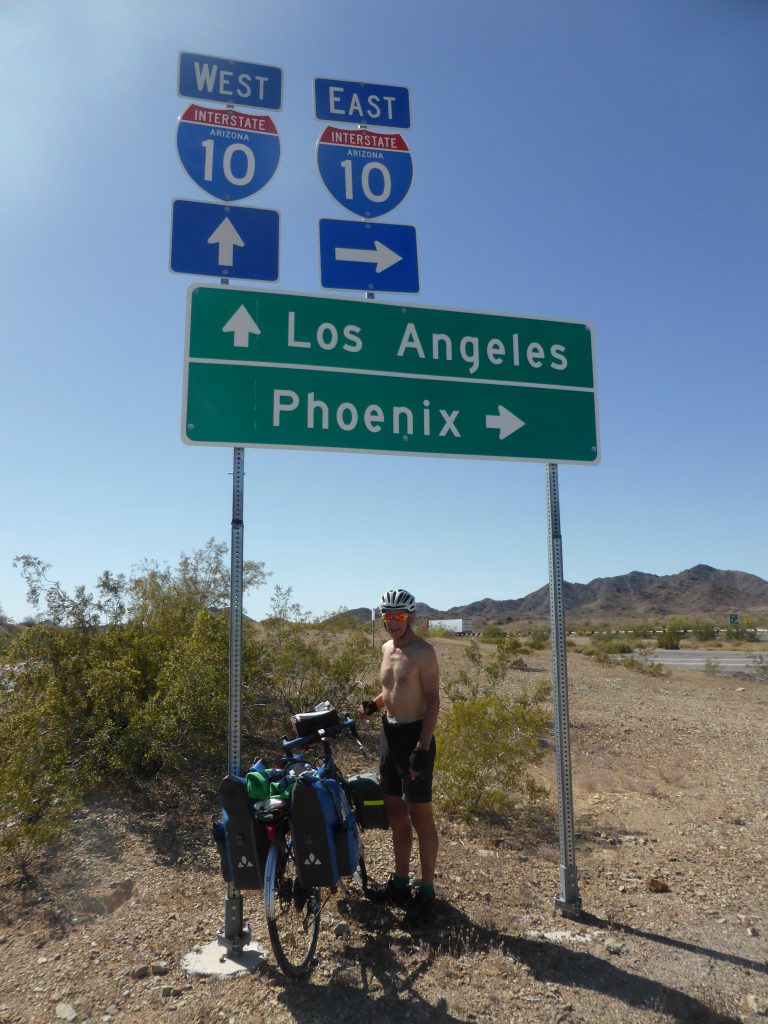
I’m not sure how much Terry heard during the night. He’d taken to reading some of the short stories written by Pat. They were a little bit ‘Mills and Boon’ for Terry’s tastes but as he said, fair play to her, that’s two more books published than either of us.
The truth was it looked like she could probably do with the extra sales income as it didn’t appear there was much money in RV parks around here. Mostly they seem to be occupied by long term locals on a good deal, random itinerant workers and if they are lucky, snowbirds from up north who overwinter in the south to keep warm.

Many of the parks seem to have given up the ghost completely. But they have an air of splendid neglect about them with ancient RVs from the 60s and 70s now either abandoned or providing accommodation on the cheap.
A road worker who was working nearby and staying at the River Breeze told us that the Kamp of America site down the road had been full of snowbirds’ trailiers until a couple of weeks ago but now was nearly empty as the sun builds in strength during April. He had stayed there, but was being charged $400 a month whereas the River Breeze charged just $160.
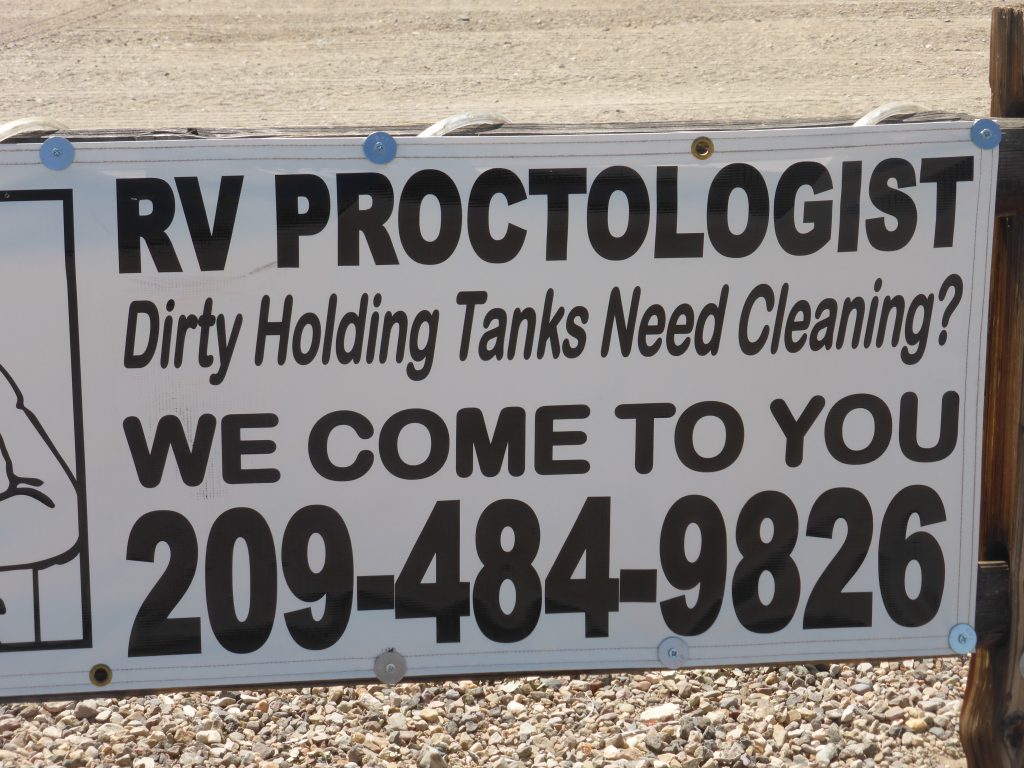
Mind you the KOA may not have come with resident snakes, which may be worth an extra $240 bucks a month, although fortunately we hadn’t seen any. In fact most of our attention was on the multitude of birds, including our favourite – the hummingbirds. But like them it was time to flit our wings and move on. By end of play today we aimed to reach Arizona’s western border.
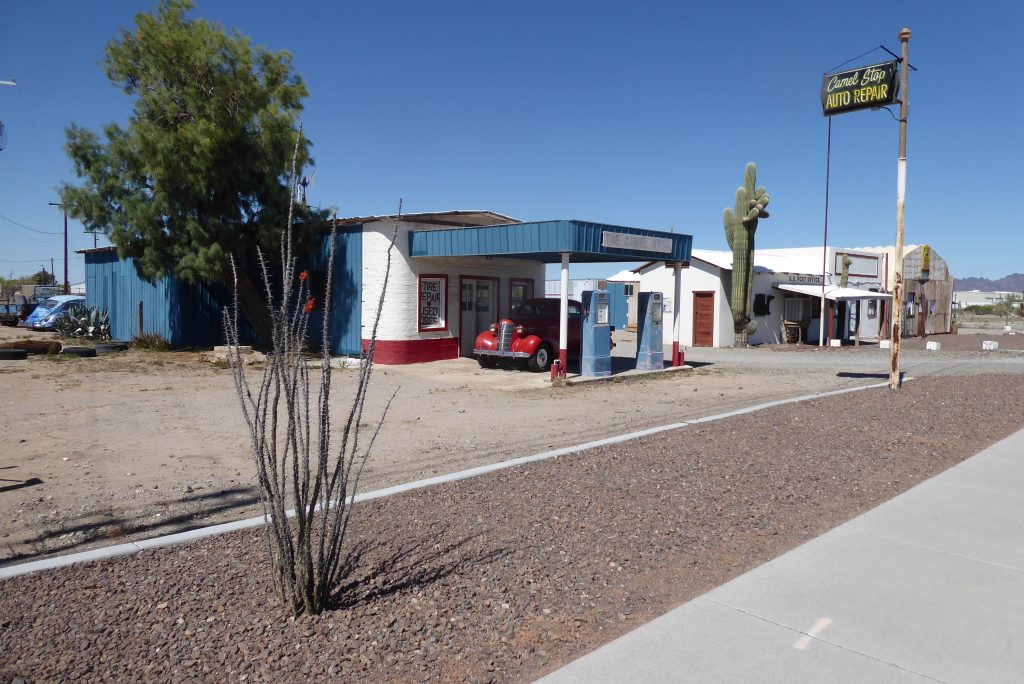
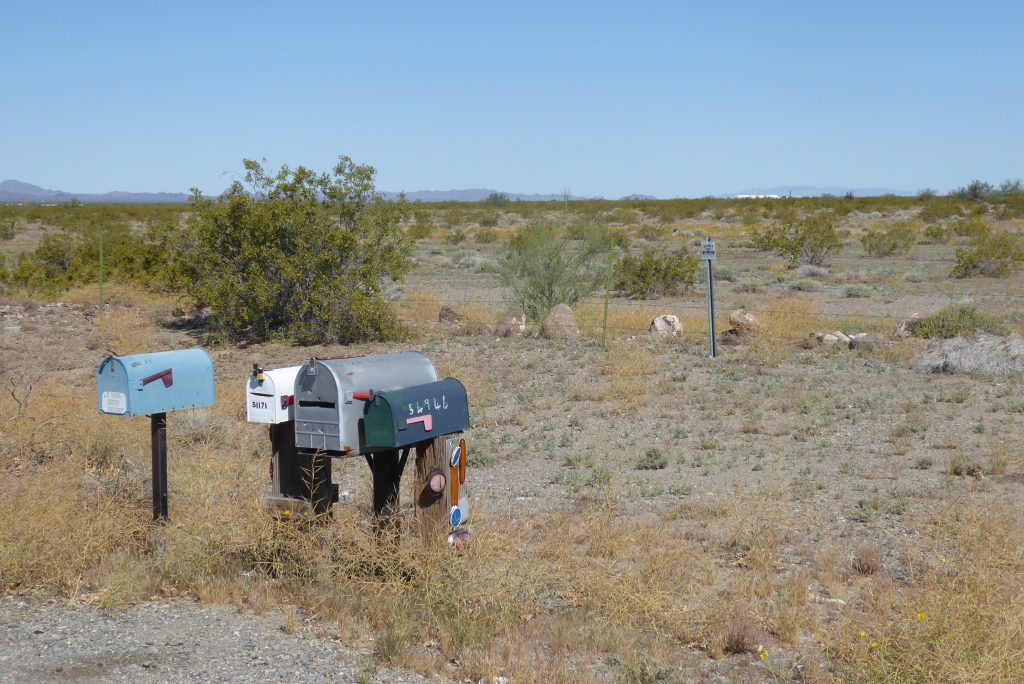
We left with a tailwind on our back and then quickly gave up the advantage by stopping at an historical marker. The plaques in New Mexico and Arizona, were nowhere near as well made or uniform as those we’d seen in Texas. They seemed far more homemade, but had far more character and variety.
The one in Salome highlighted the life of Dick Wick Hall, one of those who co-founded the town in 1904 along with Ernest Hall and Charlies Pratt. The town itself was named after Pratt’s wife – Grace Salome Pratt. I guess it was a better choice than her surname.
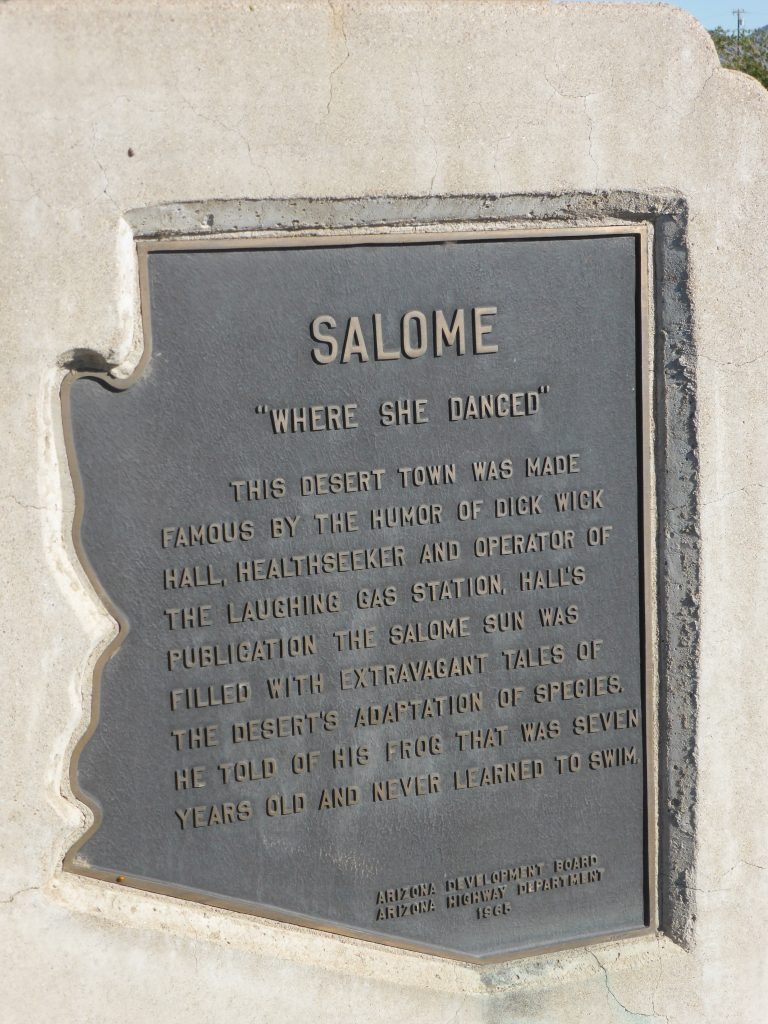
Dick Wick Hall was a humourist who published the ‘Salome Sun’ a newsletter filled with extravagant tales of animal species’ adaptation to the desert with the most famous being a seven year old frog that never learned to swim. Excerpts from his paper became a regular feature in the Saturday Evening Post, an illustrated national magazine which reached millions of homes from the 20s through to the 60s.
“By 1926 his writing had proved so successful he had signed a contract to beome a screenwriter for Universal Studios”.
Hall opened a post office, restaurant, store, inn and golf course and with the arrival of the road in 1920 he started a new venture, which he called the ‘Laughing Gas Service Station’. By 1926 his writing had proved so successful he had signed a contract to beome a screenwriter for Universal Studios, but he died in April that year after he had a tooth taken out and sepsis set in.
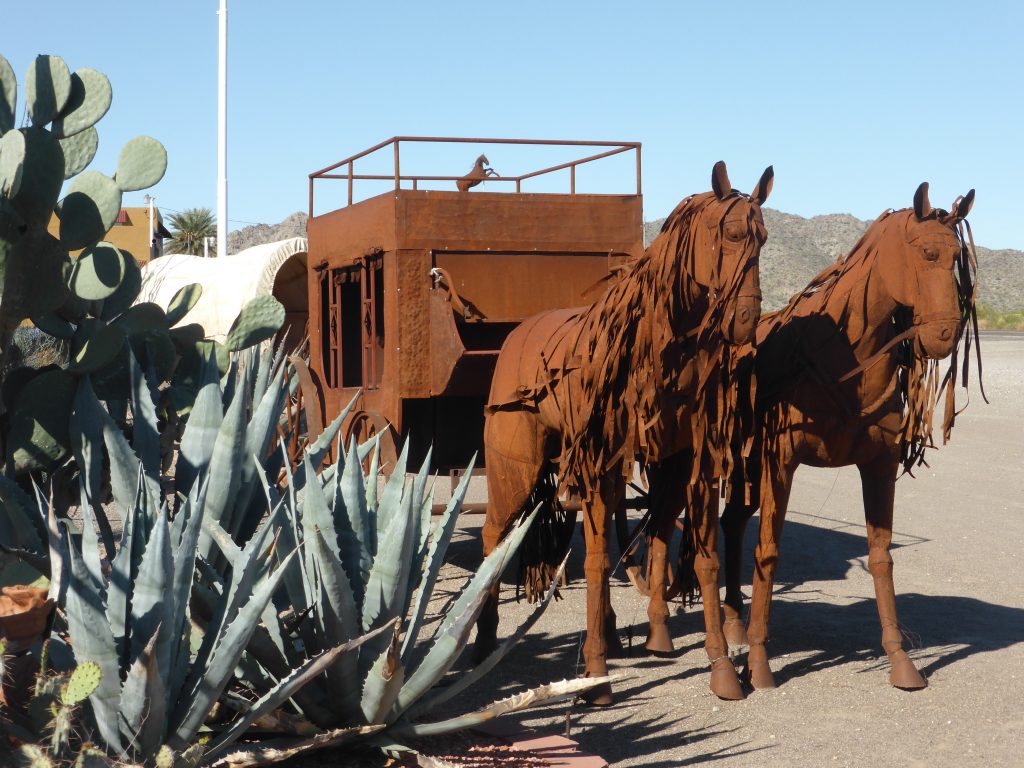
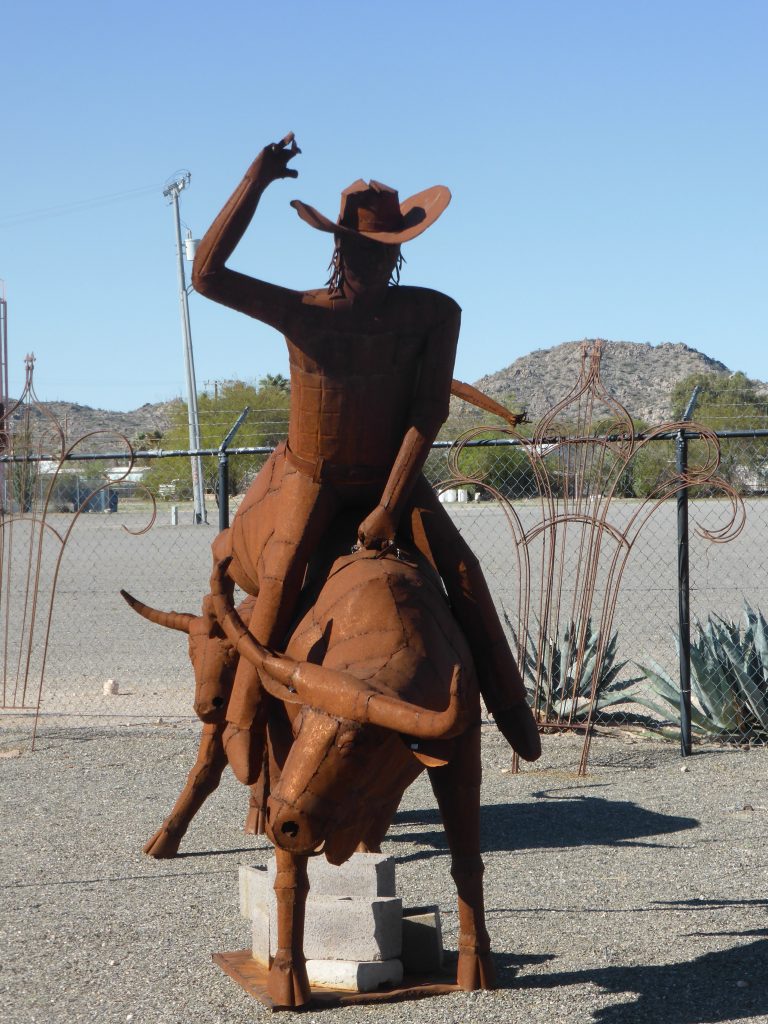
Moving out of Salome we began a hardly noticeable climb through Harcuvar, which had a collection of metal sculptures similar to those we’d seen elsewhere in the area, and onto Hope, where the sign writers had obviously enjoyed having a field day with offerings such as: ‘You’re Now Beyond Hope – Ramblin’ Roads RV resort. Adios’.
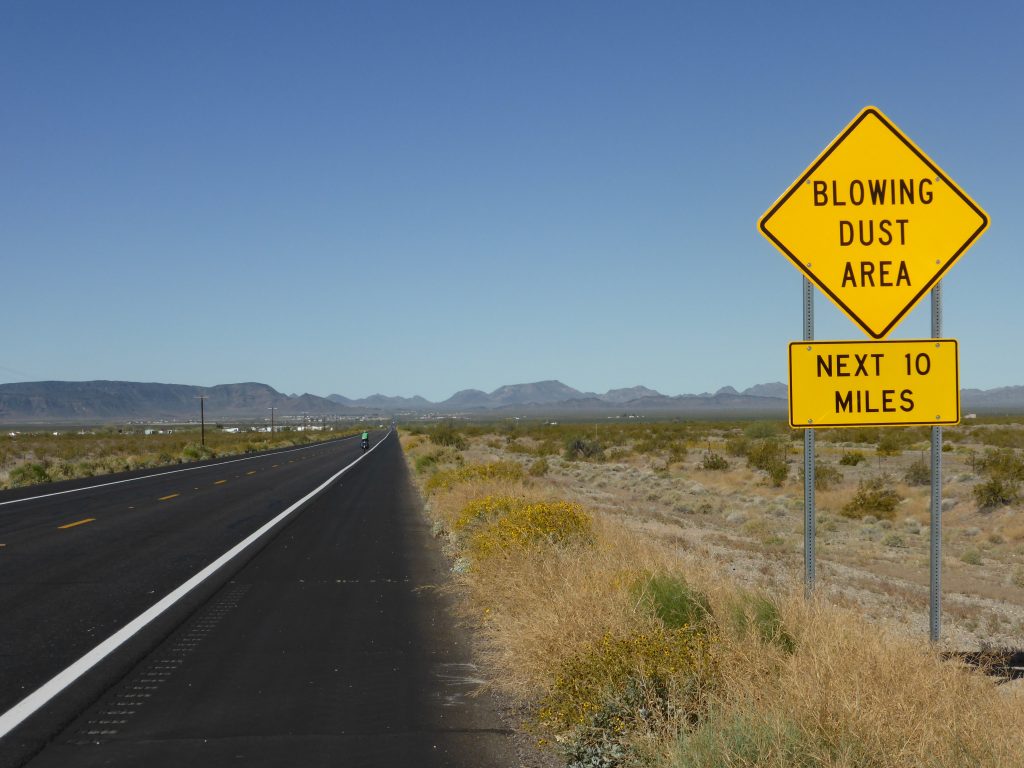
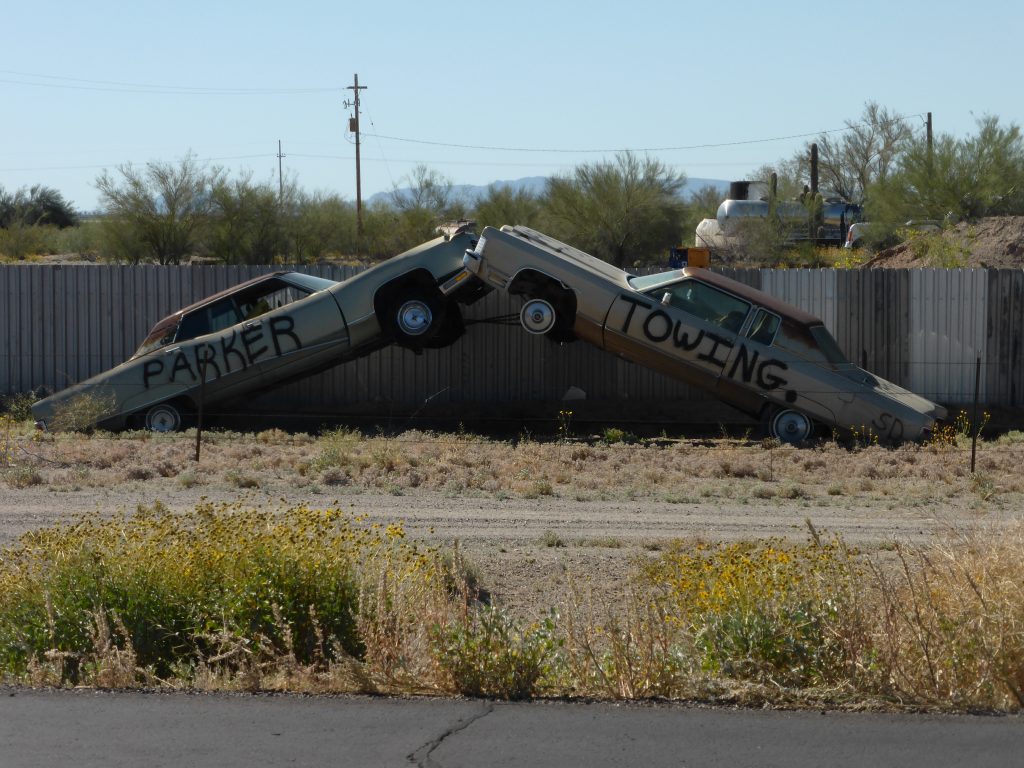
We then dropped down onto a scrappy plain as expansive as many we’d cycled across, but littered with man’s activities from scrapyards to RV parks and storage units. To be honest it was a bit of a mess and that looked likely to get worse as the next sign we passed declared: ‘Blowing Dust Area – next ten miles’. Lovely, just the kind of thing you need on a bike.
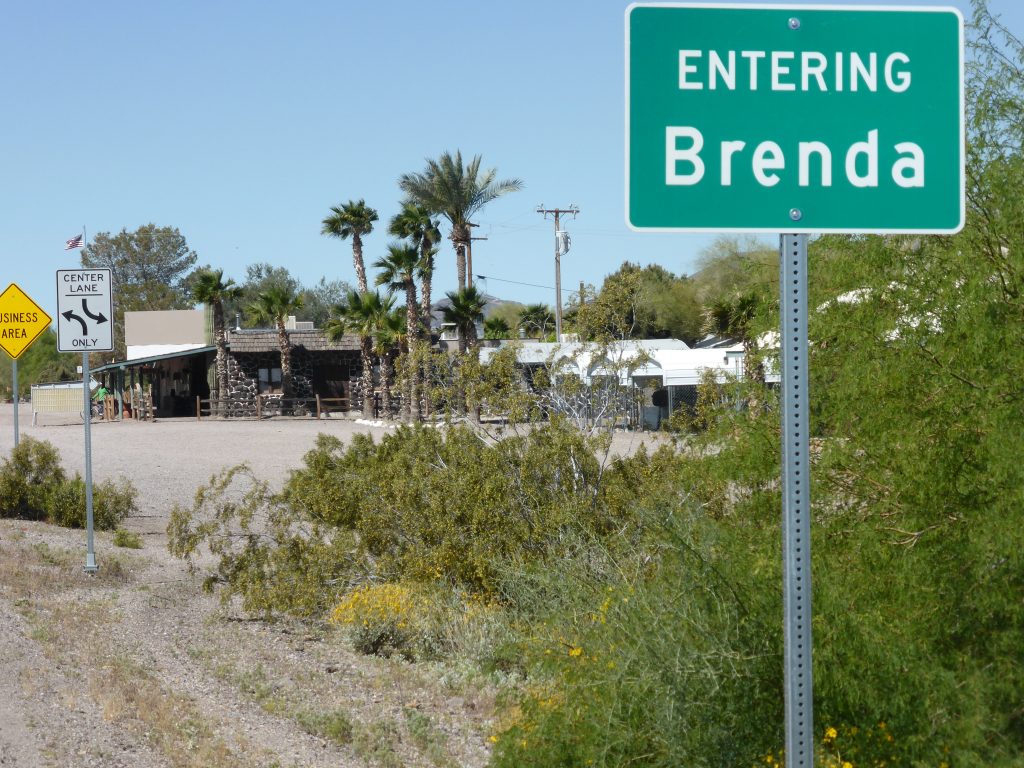
Fortunately the wind held off and as we approached the next town, curiously named Brenda and we wondered if the sign writers fun had continued here. So far nearly every place we had cycled through announced itself with a ‘Welcome to Wickenburg’ or a ‘Globe City Limits’ but The sign outside Hope’s neighbour read simply: ‘Entering Brenda’. Poor girl. With schoolboy chuckles we parked outside The Country Store and managed to make a coffee last an hour by chatting to anyone who passed by.
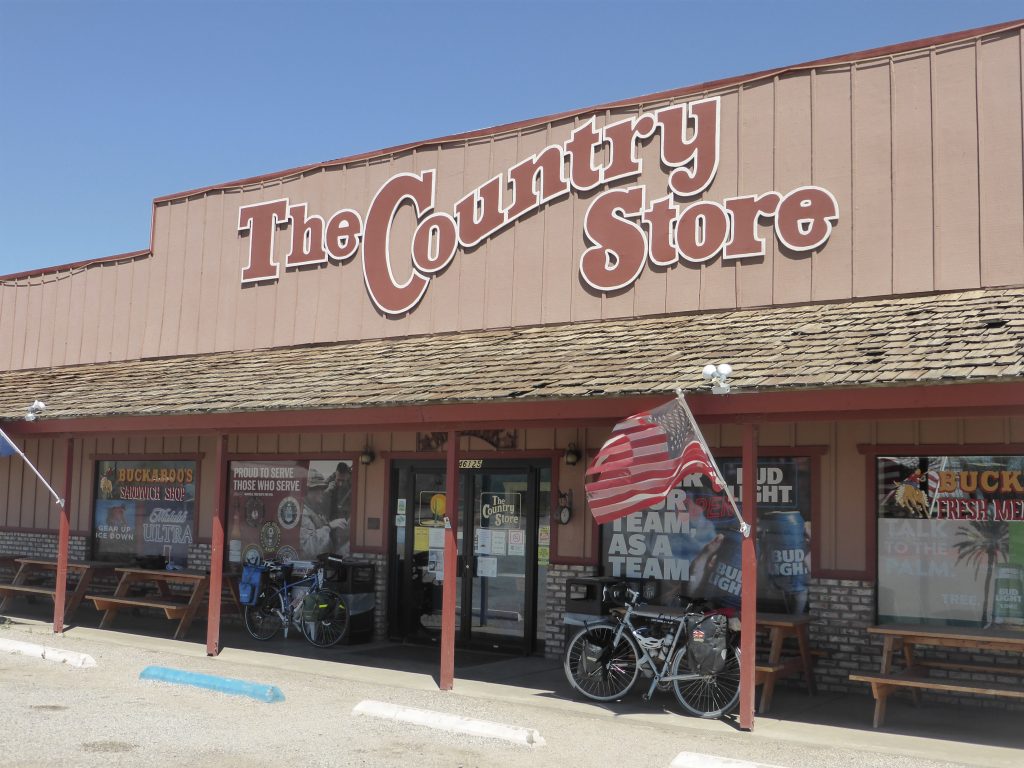
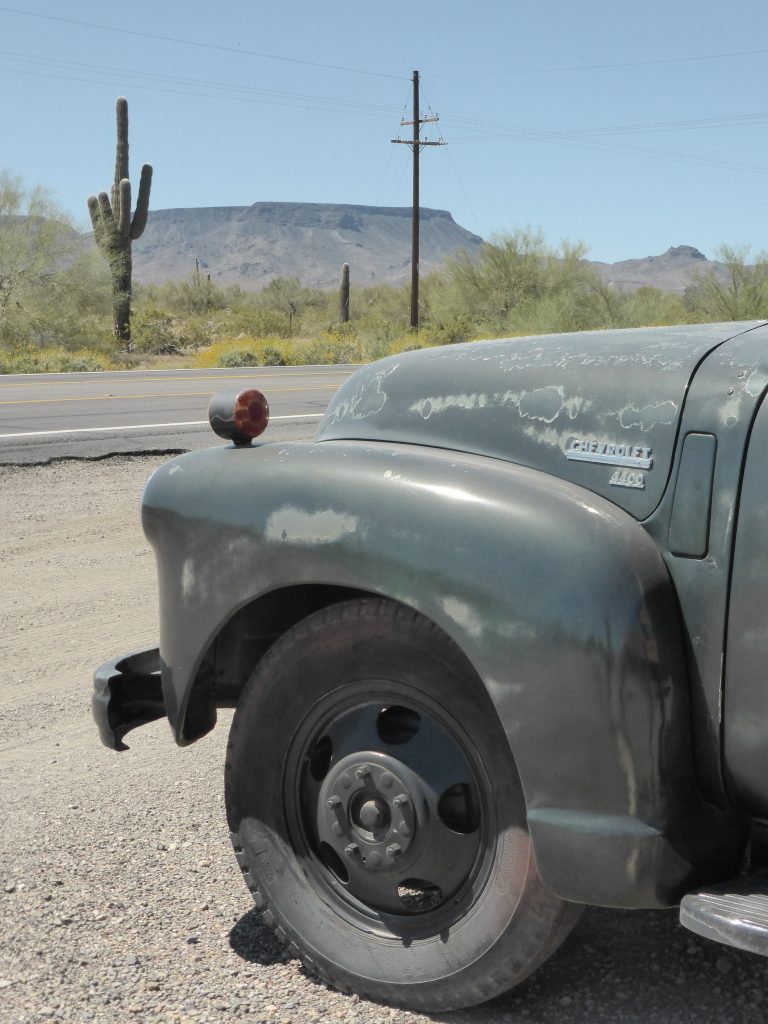
Leaving the tranquil pace of the 60, we were forced onto the I10, which has done so much to damage the economies of these now cut off towns. Riding close to roaring traffic we climbed uphill, through narrow eroded ribs of vertica strata, looking like massive upturned rip saws. Then it was helter skelter down into Quartzite which we could see sprawling across the plain in front of us.
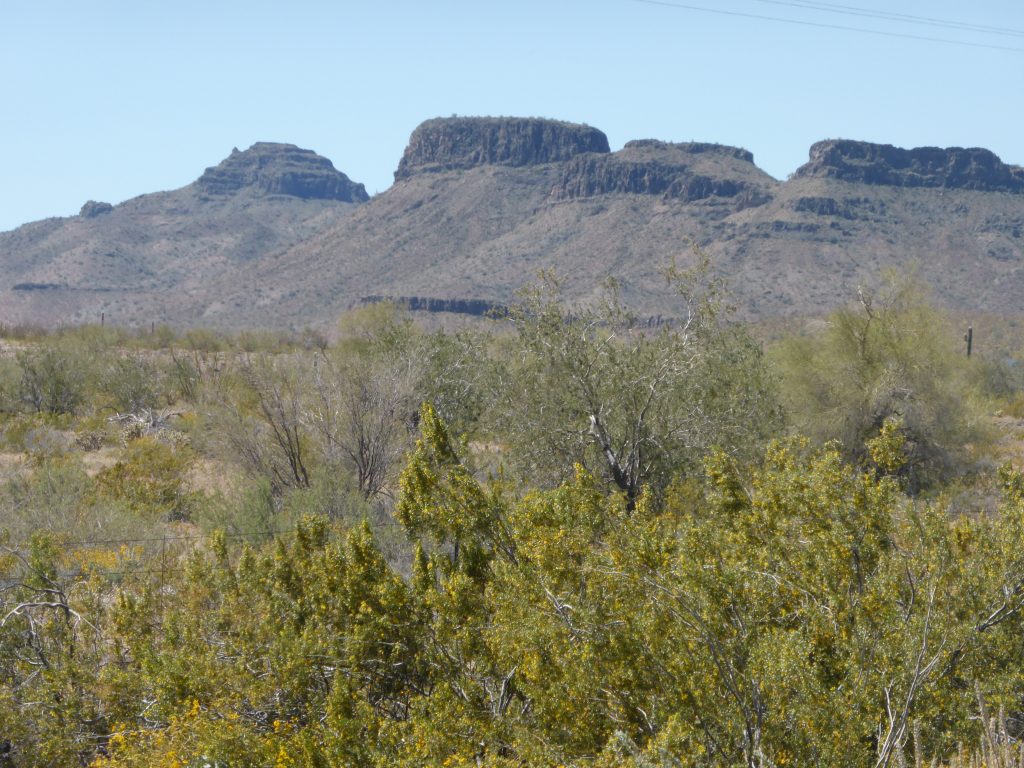
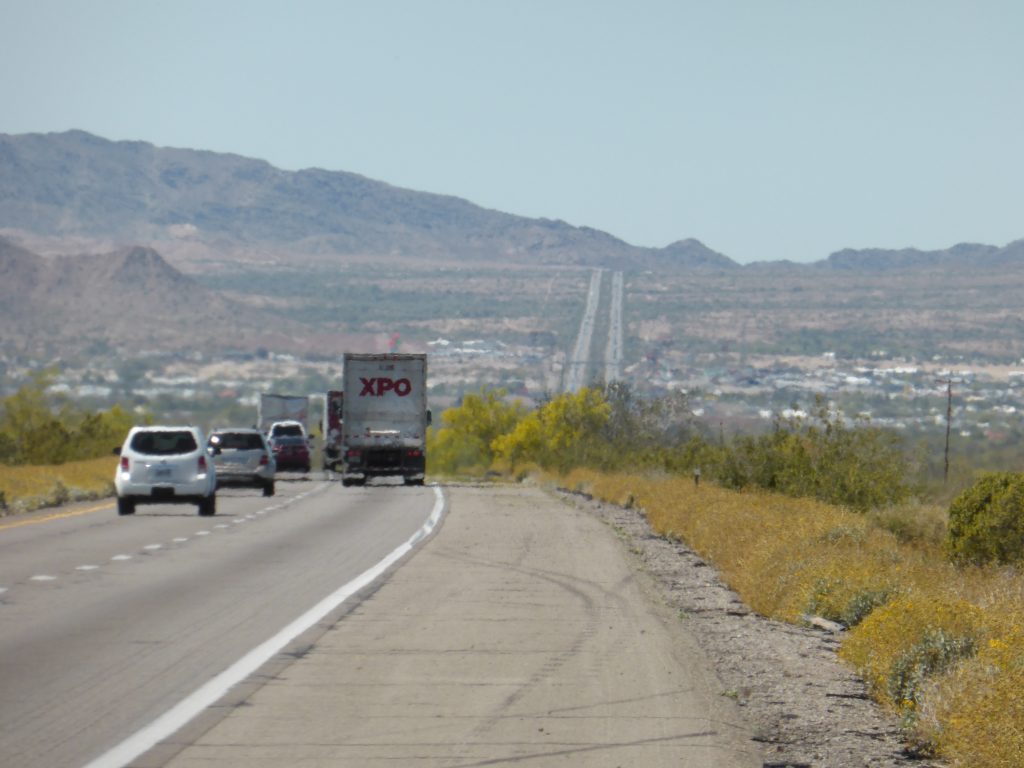
With its motto being ‘The Rock Capital of the World’ Quartzite’s claim to fame is as one of the hottest places in the United States, hitting a staggering 122F in July 1995. And where there’s heat there are ‘snowbirds’ from the north, prepared to drive thousands of miles, desperate to get dosed up on vitamin D and avoid the white fluffy stuff.
Quartzsite’s unusual population is around 3,500, but this swells to 150,000 during the winter. The snowbirds arrive in a battalion of RVs which are parked around town covering every inch of the desert for miles and miles.
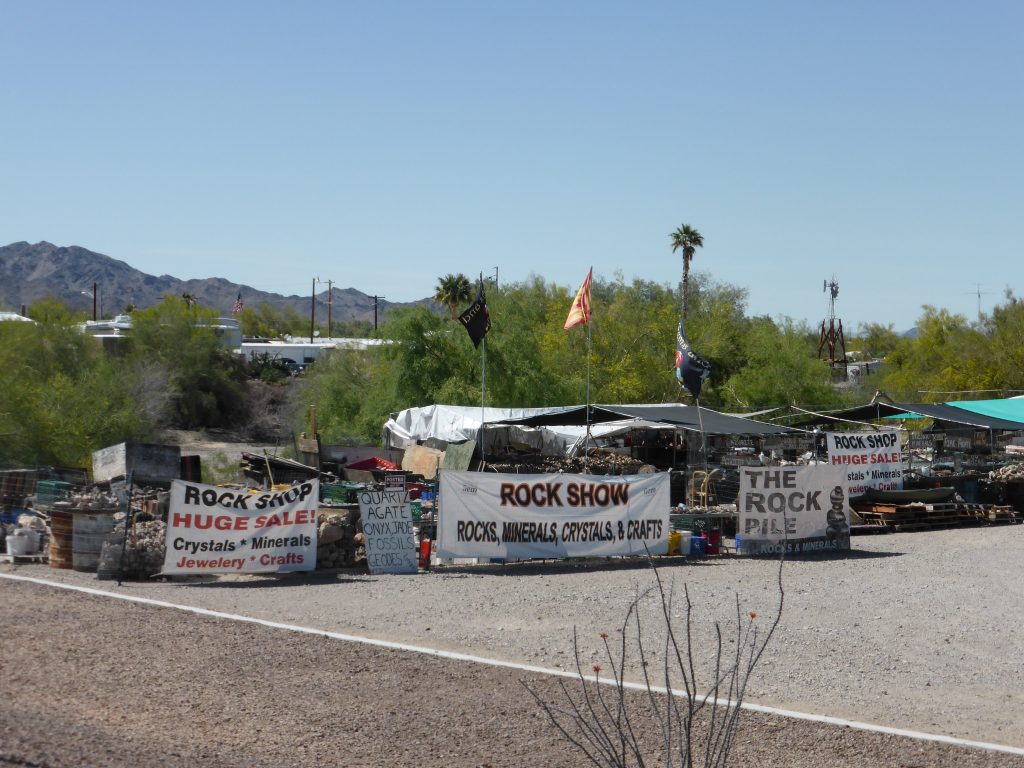
As their vehicles fight over the best spots, a huge tented metropolis rises up in the valley with businesses ready to cater for their every need. Imagine a giant music festival that goes on for months on end but with no bands, no shade, no young people and not a blade of grass anywhere. Hmmm.
We’d been told that peak season for the ‘birds had already passed, but as we approached down the I10 you could see the remains of a major sprawl stretching out in all directions and there were signs for RV parks everywhere.
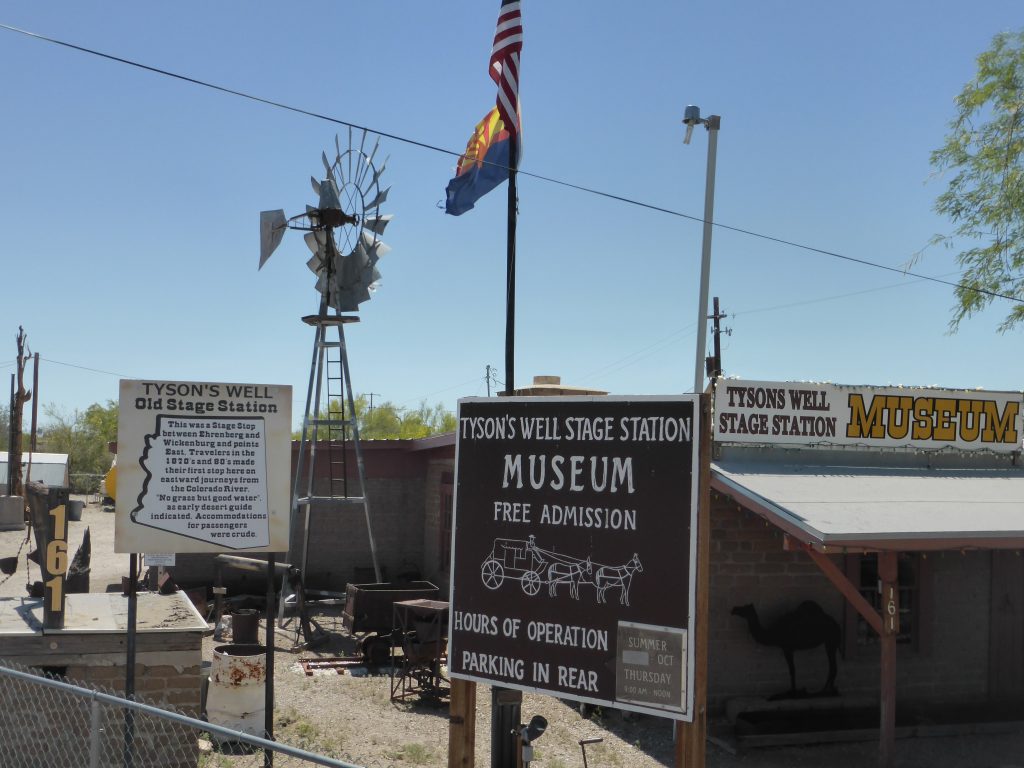
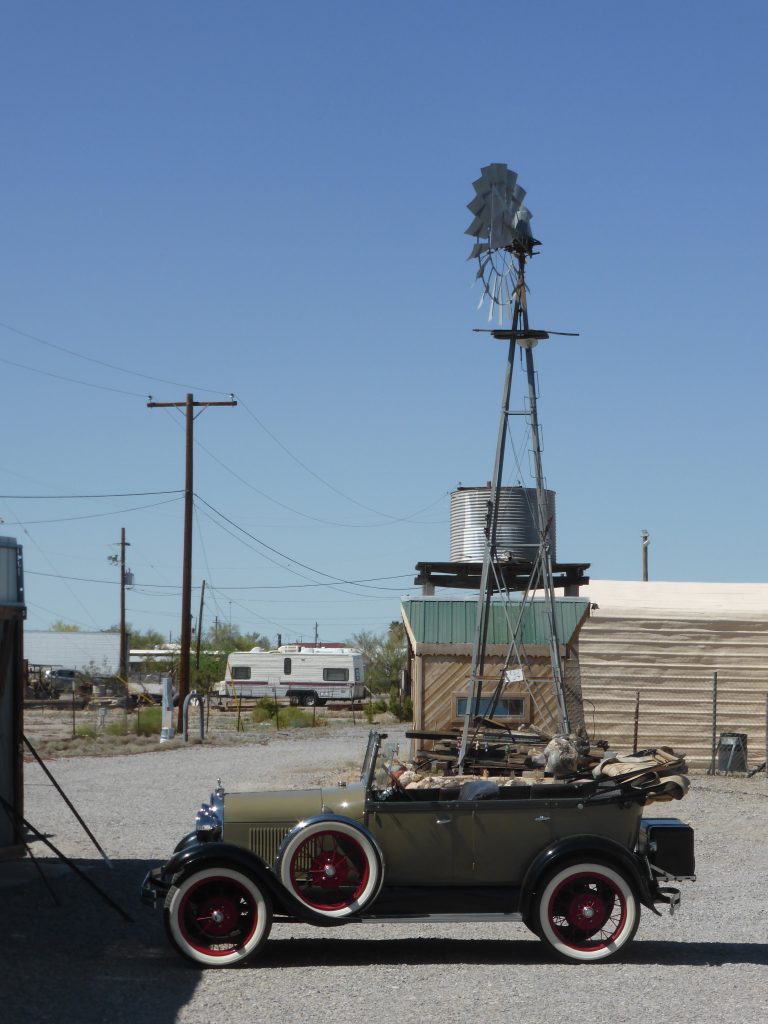
Diving into Silly Al’s restaurant for lunch we found a few of the pensioners were still hanging around, although they referred to themselves as ‘smart birds’ rather than snowbirds. Perhaps this was on account that they’d bought a home nearby so they no longer needed to drive down in the RV. Quartzsite didn’t seem to have much beyond a few museums – and plenty of rocks for sale – and we struggled to think what people did with their time, packed in like sardines for months on end.
“The two elderly couples, tucking into pizza next to us, explained how cold it got in Wisconsin during the winter”.
The two elderly couples, tucking into pizza next to us, explained how cold it got in Winsconsin during the winter and the depth of snow, so we could understand why they’d want to get under the sun, but why anyone would choose the middle of the Arizona Desert next to an Interstate with no trees, no shade and very little culture still baffled us. We could only imagine that the cost of parking your Winnebago or Airstream must have been incredibly cheap.
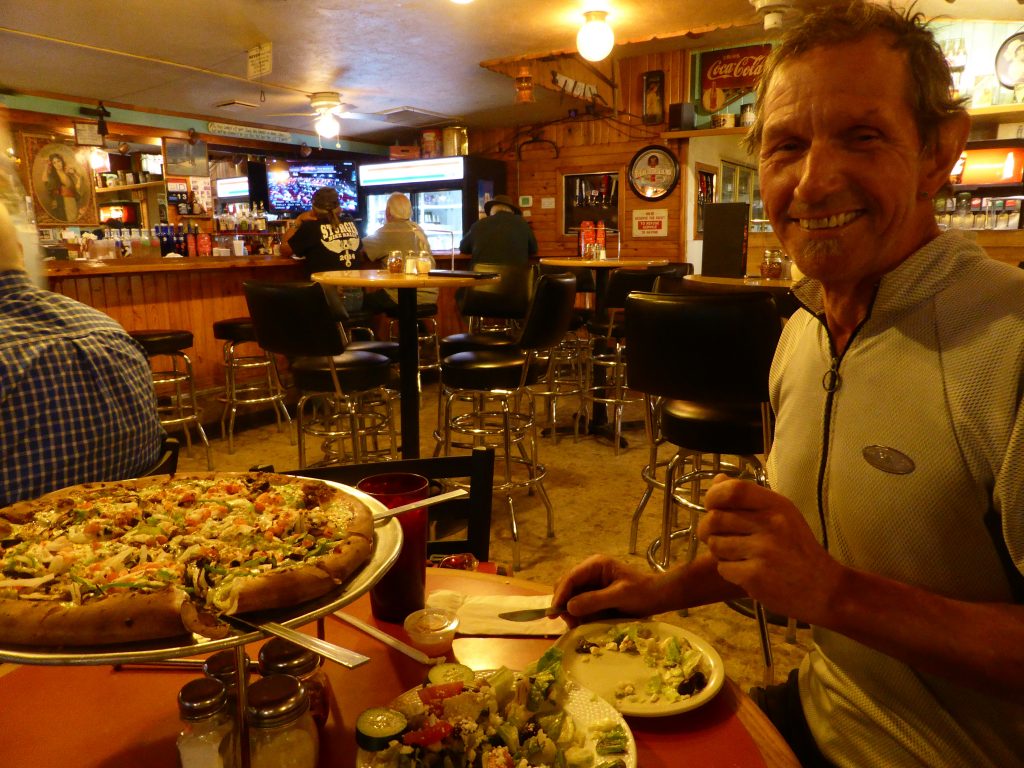
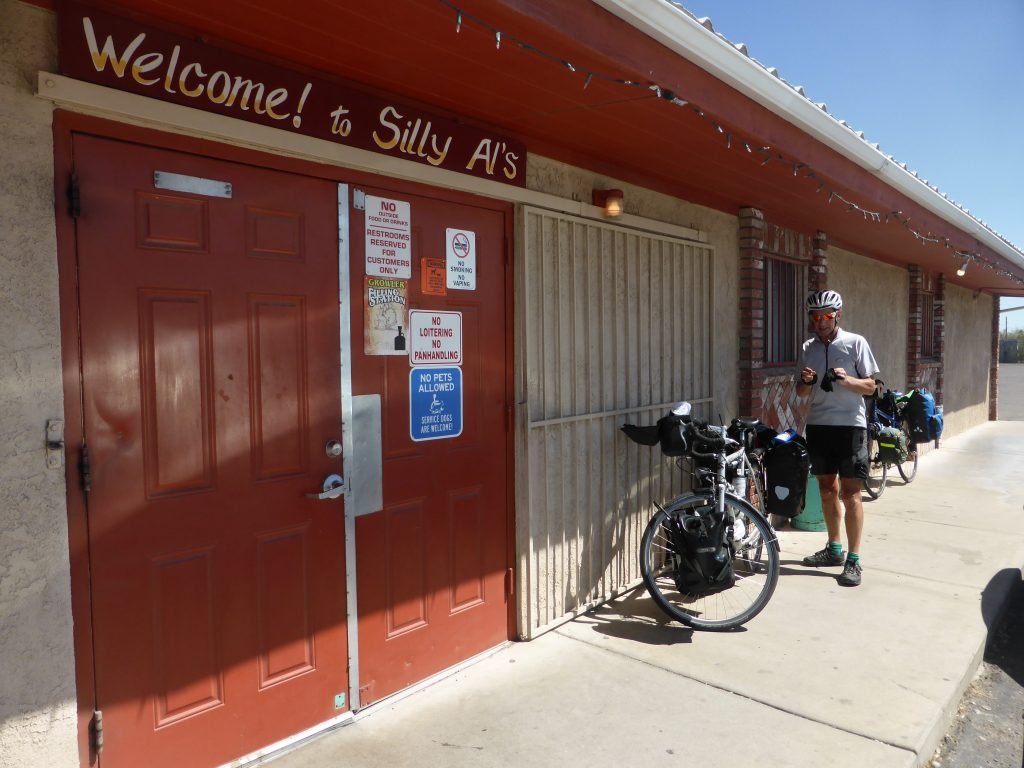
An occasional still RV remained, but it was mostly deserted, although you got an idea of what this place must be like when the migration is in full swing – RVs as far as the eye can see, each one sweltering around under the heat of the sun with the engines running and the air con going into overdrive. It seemed like hell on earth.
“You should have been here a month or so ago,” one of the birds told us, referring to Silly Al’s and looking around at the empty tables. “You couldn’t move for people in here.” It was easy to see why. Silly Al’s seemed to be the only restaurant in town, which despite being miles from anywhere had turned out just the best veggie pizza and Greek salad we’d had anywhere in America. But you can’t sit in a restaurant for two months can you? Can you?
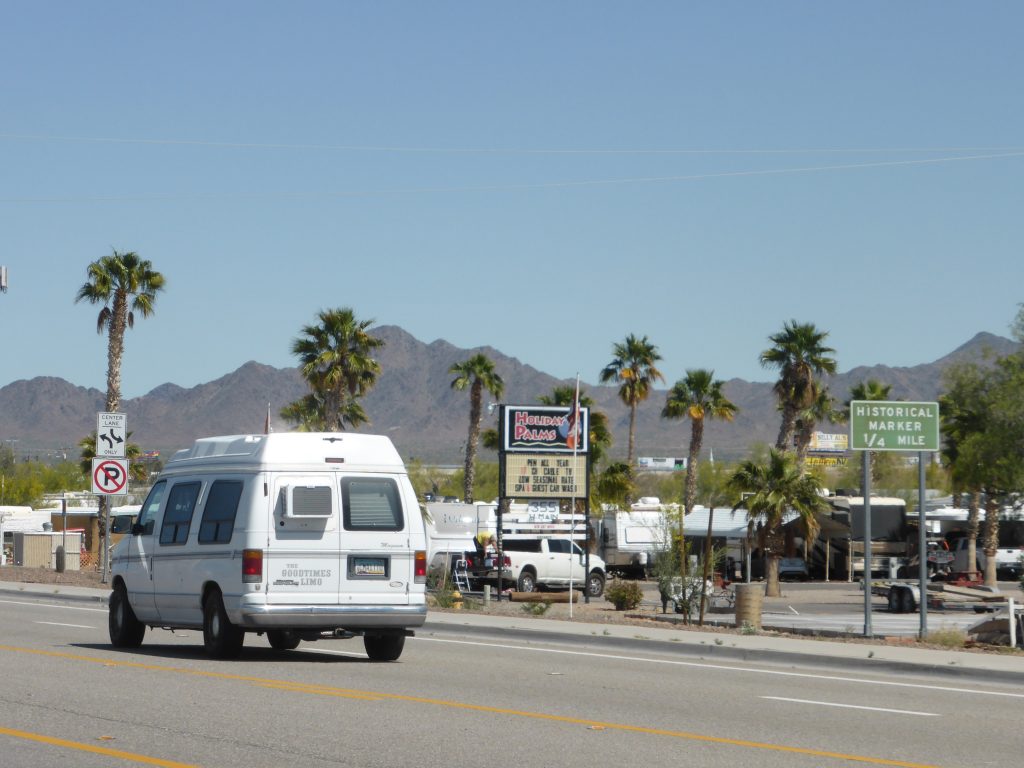
We finished up and continued our journey west – the start of our route taking us up on Dome Rock Road through vast parking areas in the desert on the edge of town. We came up upon a couple on mountain bikes and shot past them as if they were stationary, despite both of us being laden down with five panniers each. It was a sign of how powerful our legs had become after around two months of riding everyday.
Soon we rejoined the I10 and with a tailwind and a general downhill we were in Ehrenberg and sipping cokes and Dr Peppers at the River Breeze RV Resort by 4.30pm.
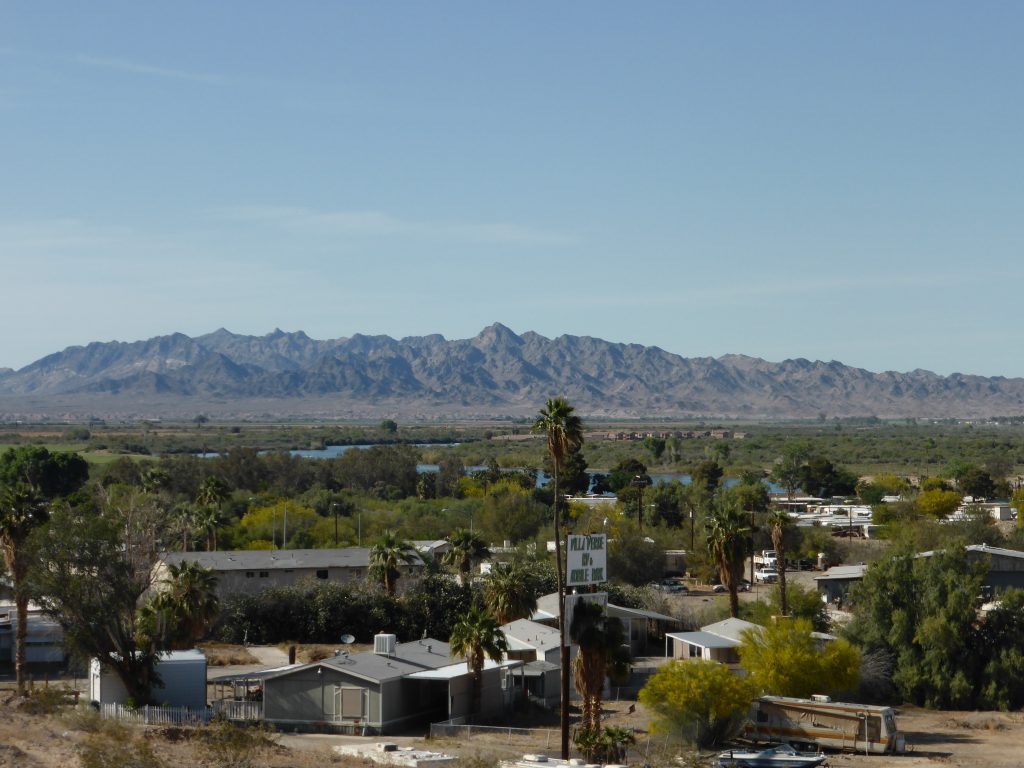
the direction of the Joshua Tree National Park.
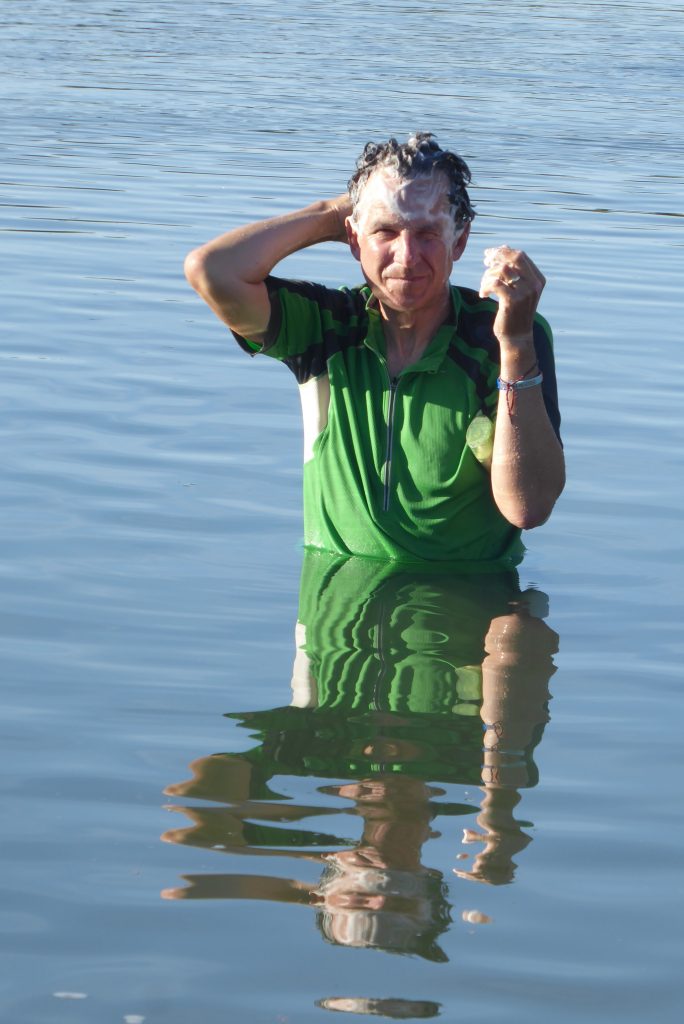
Given an excellent camping spot close to the river we are surrounded by a clientele who have turned up in huge pick-ups (complete with their own showers) towing trailers, golf carts, dune buggies and speedboats.
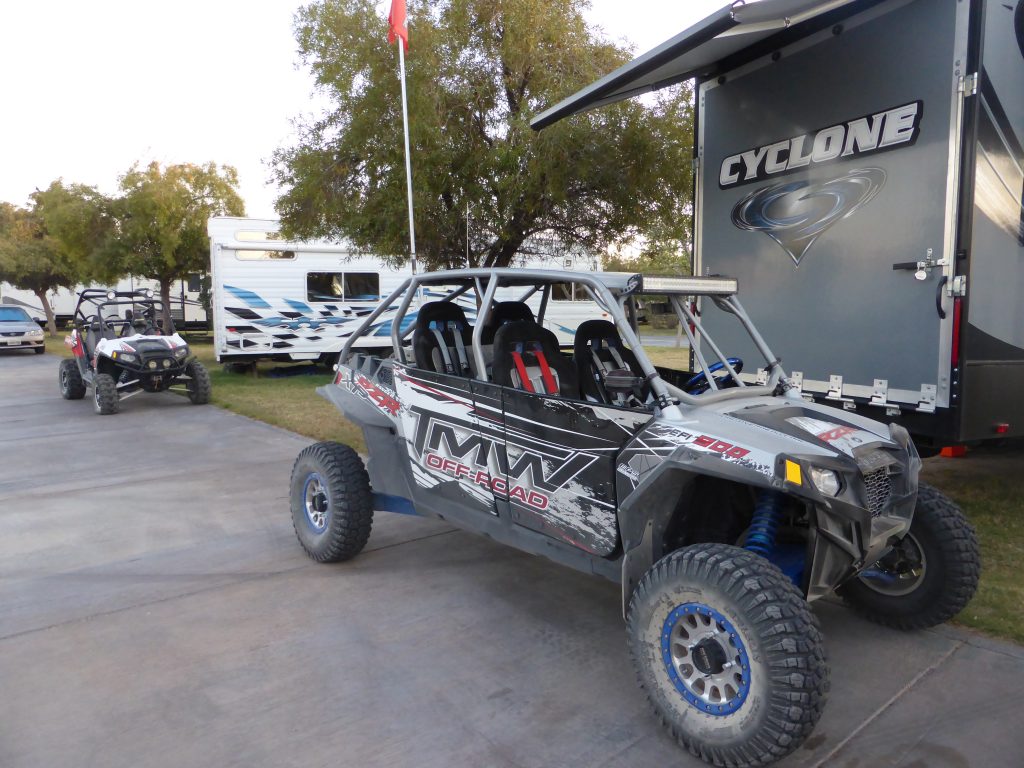
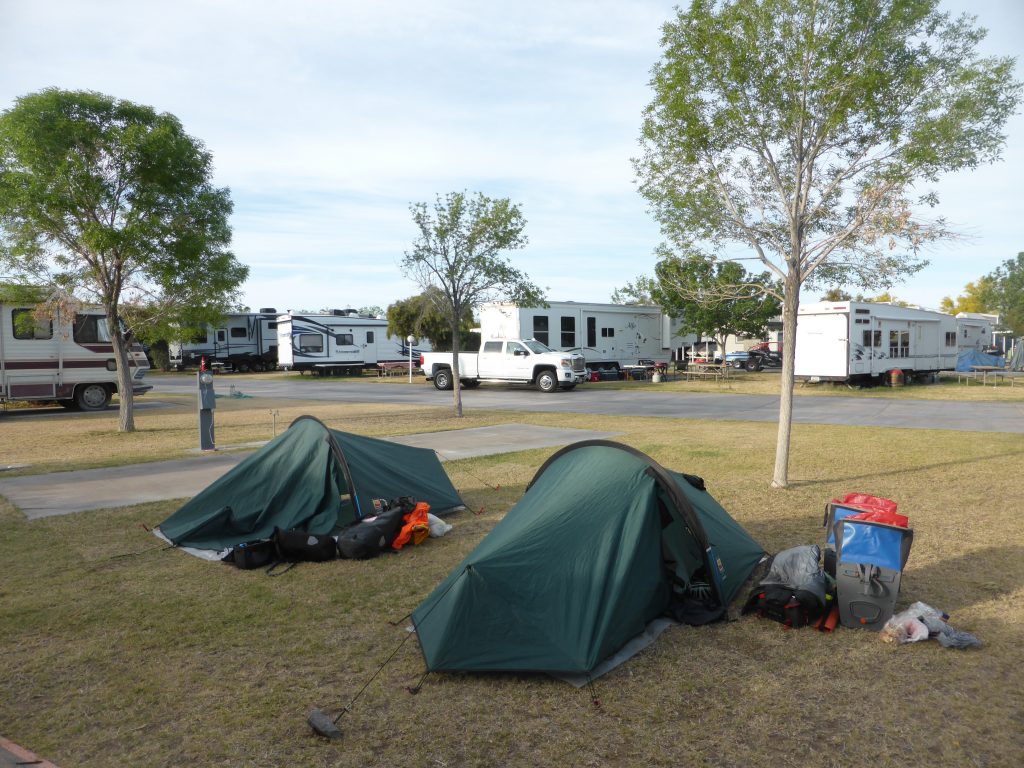
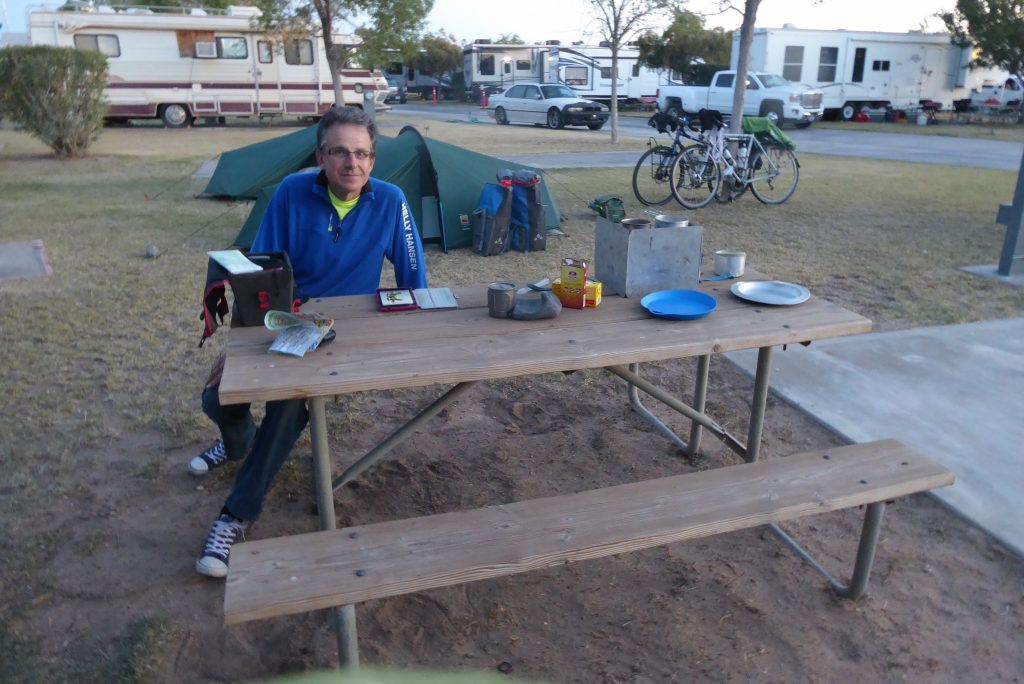
Talk about boys with their toys, but give Terry and I a dip in the Colorado, two little tents and our bicycles anyday of the week.
Today’s miles: 59.10
Total miles since Anastasia State Park: 2,823.72
